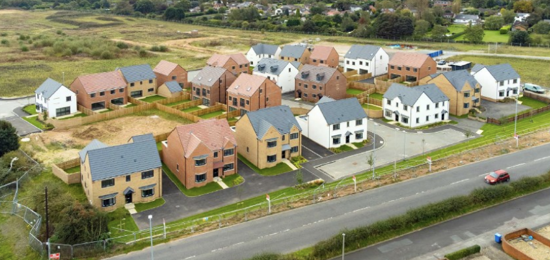What to do if you receive a down valuation on your site
Valuations are under pressure. We don’t like calling them down-vals, but as that is the market terminology – lets go with that. Down valuations aren’t rare right now: deals are taking longer to transact, comparables are patchy, and valuers are cautious when evidence is thin. In some parts of the market, advisers are reporting a marked rise in down-valuations compared with 2024, reflecting uncertainty rather than any single factor.
Why it’s happening
- Sales values. Fewer transactions mean comparable evidence is limited and not always like for like. Where evidence is thin, valuers will (rightly) exercise caution to meet strict professional standards.
- Project costs. Build costs have been volatile since 2022. Downward pressure on Gross Development Value (GDV) and upward pressure on build costs inevitably reduce the residual land value.
- Time lag. With transactions taking longer, values that were supported at the beginning of the process, may not be supported further down the line.
None of this automatically means your scheme isn’t viable. It does mean you should respond quickly, methodically and with good data. Here are four practical steps to take control and keep your development on track.
Step 1: Take a breath and interrogate the assumptions
- Revisit local comparables. Where Land Registry data lags, use live market intelligence: speak to local estate agents about achieved pricing and buyer demand. Share notes (and any exchanged but not completed deals) with the valuer so they can weigh them alongside historic evidence.
- Compare like for like. Separate truly comparable units (size, spec, parking, outside space). If your scheme is atypical, explain the nuance — generic comps struggle with non standard stock.
- Demonstrate your sales and pricing strategy. Don’t forget to provide the valuer with details of any pre-sales and full details of how you intend to take the development to market. Think about reducing sales risk by release phasing, sales incentives and target absorption so the valuer understands how you’ll protect GDV in current conditions.
Step 2: Engage your valuer — and your lender — constructively
- Share, don’t pressure. Provide refreshed comps and pricing rationale in a concise, transparent way. Valuers welcome better evidence when it’s professional and clear.
- Stress test together. Run sensitivities on GDV (e.g. –5%/–10%) and costs (+5%/+10%) so everyone sees the same risk envelope. Tie this back to programme risk, not just headline percentages.
- Ask about leverage headroom. Understand how far your current lender can go on LTV/LTC given the new opinion of value, and how that might affect commercial terms.
Step 3: Explore your funding options early
Today’s market has a wide ecosystem of non bank lenders who can move quickly when given the full picture. First, pinpoint your constraint: is it overall loan size or day one advance? Then consider:
- Stretch senior – in the first instance explore whether higher leverage options are available – senior debt is always the cheapest and simplest option
- Third party equity or mezzanine to bridge a modest gap, ensuring the all in pricing preserves feasible returns.
- Loan structuring such as revisiting your drawdown profile and sales programme — options including sales milestones and peak debt structuring can stretch equity efficiently.
The key is transparency so a lender can give a swift, realistic view.
Step 4: Reflect on your land acquisition strategy
If you don’t already own the site and acquisition is part of the proposed facility, you may need to renegotiate with the vendor. This can be emotive and create friction, so do the following:
- Provide a clear, concise and accurate overview of the down valuation and its impact.
- Be prepared to share supporting information.
- Set out a reasoned case for any price adjustment and keep negotiations polite and professional.
Our perspective
Atelier’s best, most durable relationships often begin at moments like this. When a valuation comes in light, we work with developers to make the project bankable: sharpening evidence, revisiting assumptions and, where appropriate, shaping a capital stack that fits the scheme and the cycle.
If you’ve had a down valuation on a live scheme, let’s talk. We’ll give you a straight, swift view on options — whether that’s working within your current facility or exploring stretch senior or alternative structures.


